Up until the last few years Larry Fishman, the founder of Fishman Transducers (in 1993), has largely been flying under the radar. As the primary OEM manufacturer of pick-ups for acoustic guitars made by Martin and Guild, to name a couple, Larry has built a successful company, almost by accident. Recently Fishman Transducers has released a stream of products designed to expand his reach while complementing his existing product line.
Some of the newer products include the Aura series of effects pedals and the Fishman TriplePlay wireless MIDI controller. Both products make critical use of the computer. The Aura Spectrum DI has a USB connector that passes audio, and allows the user to access additional Aura acoustic images. The TriplePlay ships with a software recording application and selection of plug-ins that form a turnkey guitar-synthesis system.
Like so many in our industry, Larry started a career as a music performer, but when a twist of fate occurred Larry was clever enough to recognize the opportunity, and industrious enough to keep building it to what Fishman Transducers is today - a thriving company the makes products that he still uses himself.
You're an acoustic bass player...
Yea, I am. I'm a sort of BeBop style, early BeBop style, from the Ray Brown, Ron Carter school of playing. I studied with Miroslav Vitous when he was in Boston.
Christian McBride is the bass player that I dig right now. He's just so freakin' perfect.
You studied with Miroslav Vitous?
Yea, he was affiliated with the New England Conservatory, and I was going to Berklee College of Music. He wasn't supposed to be teaching on the side, but we did it anyway. It was good.
How did Fishman Transducers come about?
I was playing in Cambridge (Massachusetts), in a little club with a guitar player in the band. A piano player joined us and brought in a Fender Rhodes. The band just started getting louder and louder, and they said "you're going to have to play clearer because we can't hear you". So I bought every acoustic bass pickup I could find, and they all sucked.
How was Miroslav Vitous amplifying his acoustic bass with Weather Report?
He was, I think, using the Lipschitz, from this guy in New York. It worked, but the thing only lasted about five days.
What was wrong with them?
They were just poorly made. They were made from elements of old telephones stuffed in a little case. You put a big rubber band around the belly of the bass to hold it in place. And I thought, man I've got to do better than that.
Do you have an electronics background?
I have a Mechanical Engineering degree. The electronics is all self-taught and I owe a lot of it to Craig Anderton. There was a little music store near where I lived. The owner was another bass player named Hank Pelosi. He liked to play golf on Wednesdays, so he asked me if I'd mind the store. No one ever came in, so I had nothing to do and there was Craig's book on the shelf called Electronic Projects for Musicians. I read it cover-to-cover, and started buying parts.
I got my first Piezo materials from a guy named Chuck Rogers, who was footnoted in the back of Craig's book. He published a newsletter on how to build synthesizer oscillators among other things. As it turned out, he ran the business out of his house, which was less than a mile from me, so I got to know him. He threw me a bunch of Piezo disks one day and he said, "You ever mess with this stuff? You can do something with it."
And so you put them on your own bass.
I tried. I developed my first pick up for my bass and tested it on my gig every Sunday, over about a four-month period, standing in the same place, the same room, the same shitty acoustics. It'd drive the band nuts. "Does this sound good? Any better than last week's version?" And after awhile it started to sound good and then all the bass players in town wanted it.
How did you make the transition from selling to the bass players in town to selling nationally?
I broke a finger. I was making some furniture in 1973 and had a piece of maple kick back out of the table saw and shattered my finger, so I couldn't play for a while. My bass needed work so I took it down to the local bass repair guy, and he called me up and says, "What's the pickup on here? It sounds great." He said, "I could sell them. Would you make more?" I said yea I've got nothing else to do. I can't play. I made up a dozen and he sold them in a couple of weeks.
My uncle was a tech PR guy. I'm having dinner with him one night and he said what's up with this business? He convinced me that I should sell my pick ups through the mail. We did a little research and found out that there was a union magazine in New York called International Musicians. So we took out this ad that said: "Obsolete: All other bass pickups before this." And there was a place for the reader's address and a check box that said: "Okay Fishman, you convinced me. Here's my check for $125." I opened a PO Box, and then almost forgot about it. I went there three weeks later and it was just stuffed.
That's a great story...
Nuts, right? So I started making a lot of bass pickups. And one thing led to another and I got a call from Guild Guitars in Rhode Island asking if I did anything for acoustic guitars. I said, "Not really, but I'll give it a shot." They placed a 500-piece order, so I started etching circuit boards in my laundry room in the basement.
A year later I got a call from Martin Guitars. They were having quality issues with their supplier and couldn't get delivery. So I came up with another design that they took to the summer NAMM show. They came back and said: "It was a smash. Can you deliver 10,000 over the course of the next year?" So my wife and I rented 5,000 feet of space, which seemed humongous at the time. We hired a bunch of my music buddies who needed money and started making them. One of our earliest employees was Reeves Gabrels who went on to play guitar with David Bowie.
Let's talk about TriplePlay. How did you hook up with (designer) Andras Szalay?
I knew him through John McLaughlin, who I made a transducer for back when he was using the Photon synth guitar controller. Over the years I worked on many of John's instruments. Andras had developed a guitar synth called the Axon, and John wanted to use it. So we stayed in touch.
Late '90s?
Yea. It was around the time that John was working with Trilok Gurtu and playing a lot of MIDI guitar.
Did Andras do the Aura?
That's how we met. A few years later we (Fishman Transducers) had developed the concept for Aura and gotten a patent on it, and all the sudden I get a call from Andras and he says, "Larry, this is Andras. I'm working on something here at Akai and I just saw your patent."
I got together with the president of Akai and we decided that—because I'd already got the patents, but I was struggling with the hardware and having trouble with the computer and battery life and this and that, we should do a collaborative thing under the Fishman name. When Akai was acquired Andras joined us full time to work on our digital products.
How did development of TriplePlay actually begin?
So, Andras called me one day and said, "Larry, you know I'd love to do another guitar synth controller and I think I can get it to work on an Analog Devices (ADI) Blackfin, because it's 100 times faster than the transputer that I had running the Axon." I said, "Andras, I'm not really interested in the MIDI guitar market. It's so edgy. But he was persuasive so I agreed to fund it for a while.
About a year later it was working really well, and we were sitting around one day, jawboning about it and it came to us that we might be able to do this wirelessly. Because the MIDI data package is really small compared to audio. And that was it. Once we got that, we figured out how to get the radios to work. It was designed as a hardware controller, and we were thinking the user would plug it into the back of a synth rack unit.
We realized we couldn't sell it though. There are no MIDI racks being sold these days. But, it was the best thing that ever happened because that's what got us into the computer.
It took a year to develop the hardware and software, application before we finally launched it. We had to do bi-directional communication between the computer and the encoder because you can change parameters with buttons on the encoder and a scrolling menu. But if you're working the studio, you can only do that with a mouse, and they always had to be syncing and updating. That was a big challenge, to get all that to work.
So that's the relationship with Andras. He's working on some really exciting, new stuff for us.
Of all the products you've done over the years, what's your favorite product and why?
Right now it's a toss up, between Aura and TriplePlay, because they're both category makers. I'm really thrilled about Aura because I've been making pickups for thirty years. I could make things a little darker and a little brighter. They worked really well, but there was a dimensionality that was missing. The sound from the acoustic actually develops about a foot or two from the guitar. The sound hole starts pumping, the top radiates. And I always wanted to capture that sound of a microphone. And I spent three and a half years on it before it actually worked. So that was pretty satisfying. We've sold hundreds of thousands of them, in the box and in guitar so that has been really satisfying.
TriplePlay to me is finally a guitar MIDI system that works really well, that works with less latency then anything else on the market. Plus it's at a price point that's a fraction of what the other systems are. It's unobtrusive. It's lightweight. It's wireless.
And the customer I want to attract is like my son. He plays guitar and drums and started messing around with loops and making music. So he had to buy a keyboard to input stuff. And he said, "Dad, I want to do this with my guitar." And I said, "The Roland stuff is expensive and the cables and this and that."
So, I want a young guitar player who got a guitar and amp and played with it a few weeks and then got bored and stuck it under his bed. I want that kid to take that guitar out, play it with his laptop or iPad. I think there's a huge market there. We did TriplePay at iOS World last year. We were swamped.
So your first innovation was pretty much out of personal need. And your second one, and I'm thinking Aura here, sort of built upon itself, and the third one was...
In the meantime we really built, as a company, the whole acoustic, American acoustic-electric guitar business. We were the sole supplier for the first twelve years.
Martin, Gibson, Guild, Laravee—at first they were all too cheap to build their own electronics. But they all wanted something to beat Takamine, and we were the sole supplier.
So, while we do not recommending breaking a finger, businesses can start in the most unlikely of ways. The question is what do you do with fate when it happens. In Larry's case it has been quite a bit. The TriplePlay pick-up can be found on guitars made by Godin, and Fender. If you are guitar player, also check out the new line of Fluence pick ups.

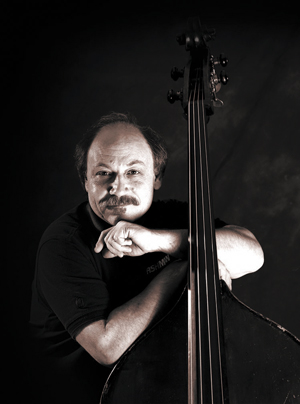

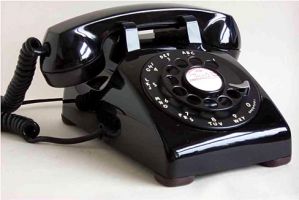
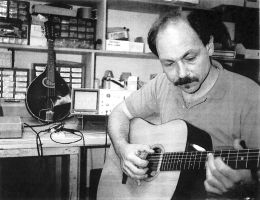
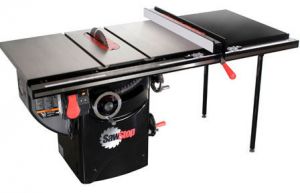

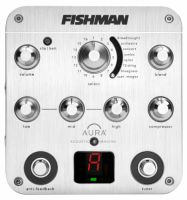
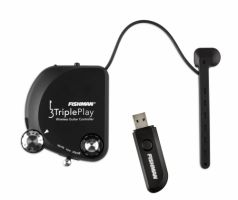
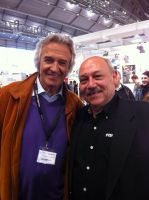
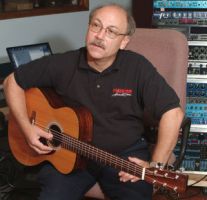

 Other Related News
Other Related News

